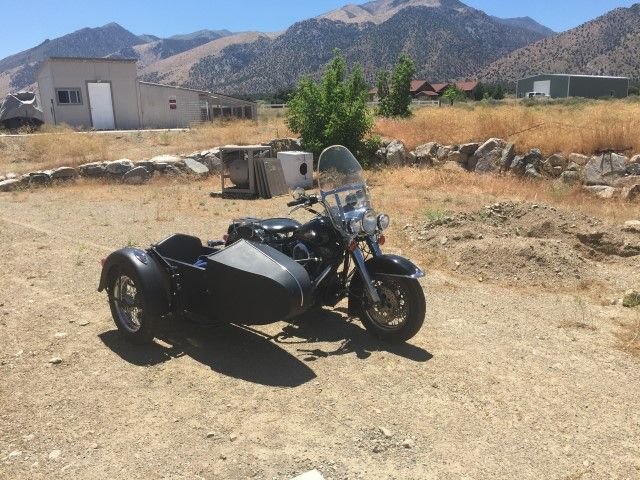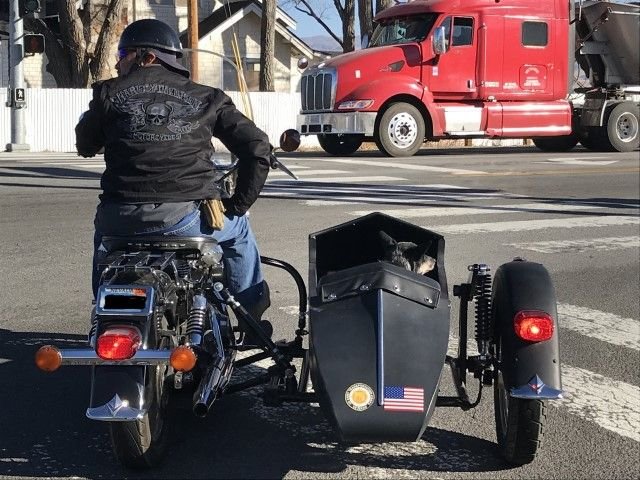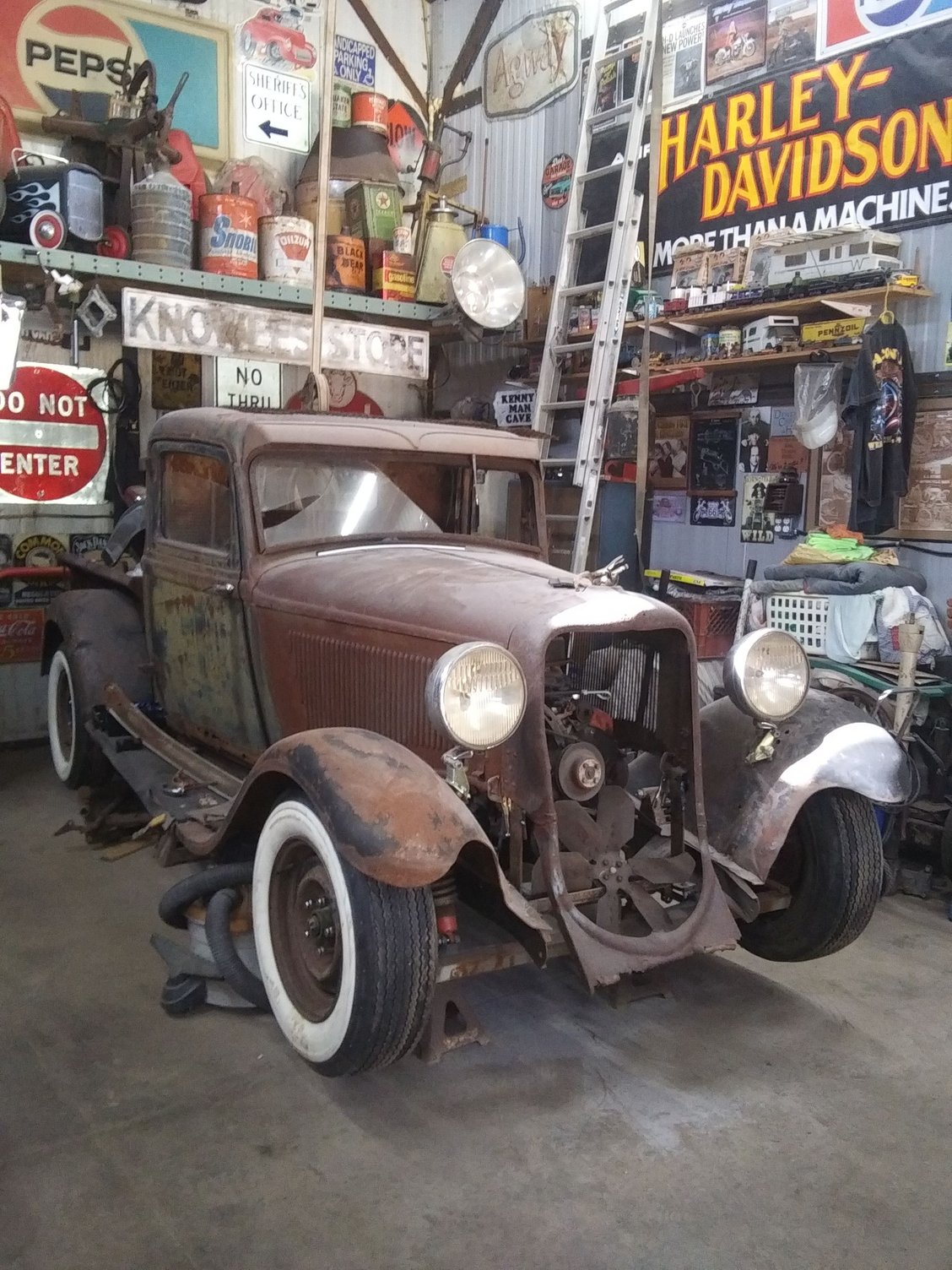Confederate Edition Harley Davidson
#101
#102
#103

Classic Harley-Davidson Motorcycles/Classic American Motorcycles
1977 Harley-Davidson Confederate Edition

Few Confederate Edition models survive, with just 23 total known today, including the 1977 XLH Sportster pictured here and previously owned by Matt Berthold.Years produced: 1977
Total production: 299
Claimed power: 61hp @ 6,200rpm
Top speed: 115 mph
Engine type: 997cc OHV, air-cooled V-twin
Weight: (wet) 220kg (485lbs)
Price then: $3,127
Price now: $8,000-$20,000
MPG: 44
Disavowed by the factory for years, and unknown even to most Harley riders, 1977’s Confederate Editions are a fascinating footnote in the history of Harley-Davidson, and may be the most collectible Harley ever.
1977 was an interesting time in America. The year before, citizens had been giddy with patriotic pride as the entire population settled into a year-long celebration of the country’s bicentennial. Patriotic expressions were the order of the day, and naturally, manufacturers got into the act as well. Harley-Davidson introduced special “Liberty Editions” of its bikes featuring red, white and blue detailing, while Ford marketed a special red, white and blue Pinto. Talk about putting lipstick on a pig. As it happens, it was also the heyday of “Southern Rock.” Bands like Lynyrd Skynyrd, The Allman Brothers, Black Oak Arkansas and Marshall Tucker were the new cultural vogue, regularly showcasing their roots in visual shorthand with large confederate flags as backdrops for their stages.
The rise of Southern Rock gave the South a new cultural cachet, while also unfortunately spawning Billy Beer, Hee Haw and, in 1979, The Dukes of Hazzard. So what’s this have to do with motorcycles? For Harley-Davidson, it was the motivation behind the most unknown model in the company’s history.
State of the industryIn 1976, motorcycle sales were booming, thanks in large measure to a continuing oil crisis. The lion’s share of product came from Japan, the once-great British bike industry limping to a self-inflicted death from outdated technology, short-sighted management and recurring labor strikes. But the Big Four — Honda, Kawasaki, Yamaha and Suzuki — were enjoying unparalleled success with their less expensive, technologically superior twins and fours.
Harley-Davidson, which held 21 percent of the over-700cc market in the U.S., was already charging Japan with “dumping” — selling motorcycles cheaper in the states than other markets. That’s what John Davidson, then-president of Harley-Davidson, alleged in the early 1970s when the motorcycle business was doing well world-wide. “The Japanese established production schedules that were much higher than mid-Seventies demand for their products,” he contended. “They chose the U.S. to unload their excess production.” (Following strong lobbying from H-D, on April 1, 1983, the International Trade Commission imposed new tariffs on all Japanese motorcycles 700cc and above.)
Harley-Davidson was still in an unhappy alliance with American Machine and Foundry (AMF) that would continue until a company buyback in 1981. The 1969 merger with AMF had brought engineering and marketing experience, as well as a generous influx of cash. Unfortunately, federal mandates meant much of the engineering money was directed toward safety and anti-pollution features, not new product development.
Furthermore, the public balked at “The Great American Freedom Machine” being built by a bowling ball manufacturer, and H-D bristled at AMF’s heavy-handed management. It’s long been fashionable to attack AMF/H-D’s quality control during this period, but the worst problems were mostly contained by the mid-1970s. The 1970s motorcycle boom appeared to have a positive effect on quality, as H-D found itself overwhelmed trying to meet demand.
Related Articles

On the Cover of Cycle GuideParting Shots: Looking Back

Leaking BSA Lightning and Triumph BonnevilleReady to take your classic queries: Tech Editor Keith Fellenstein.

The Lyon Air MuseumSanta Ana, CaliforniaThe Super Glide
Part of Harley’s re-emergence could be attributed to a model introduced at the start of the decade — the Super Glide. Combining the FL’s frame, rear suspension and 74ci Shovelhead engine with the XL Sportster’s front fork assembly, smallish headlight and 19-inch front wheel, Willie G. Davidson created the 1971 FX Super Glide, a bike that would capitalize on the “chopper craze” and save Harley-Davidson. Wearing a fiberglass “boat tail” fender washed in patriotic red, white and blue trim, Fat Bob tanks and kick-start only, the FX Super Glide is generally credited as the first factory custom. A change to a more standard Sportster seat and rear fender in 1972 boosted sales, as did the introduction of the electric-start FXE Super Glide in 1974, whose sales dwarfed the kick-start model.
To commemorate the country’s bicentennial in 1976, Harley released the Liberty Edition — a successful limited-run paint and trim scheme for the Electra Glide, Super Glide and Sportster — consisting of a metallic black base color with eagle and American flag decals on the tanks, fairings and saddlebags.
The late 1970s would be filled with numerous special editions and commemorative models, most likely to obscure the fact that little technical innovation was happening. In 1978, Harley would release the popular 75th Anniversary models, but not before introducing a most unusual, and still-controversial, limited production bike, the Confederate Edition.
The 1977 Confederate Edition
Like the Liberty and Anniversary Editions that immediately preceded and followed them, the Confederate Editions were stock Harleys with special paint and decals. The CEs wore metallic gray paint (DuPont Imron 44437 Ice Blue Metallic) and rebel flag decals (H-D part no. 61651-77 and 61650-77) on the tank, while the front fender sported a general’s sleeve braid decal (H-D part no. 59100-77).
The Confederate Editions were built across the model range in irregular numbers including 44 FLH Electra Glides, 228 Super Glides (all FXEs with the 3.5-gallon “bread loaf” tank borrowed from H-D’s Italian Aermacchi cousins), 299 XLH Sportsters, 45 XLCH Sportsters and 15 XLT Sportsters. The Confederates were produced in one batch only, and forgotten almost immediately. But why? For starters, the Confederates got no press whatsoever. In 12 years of researching the model for his Confederate Edition Registry, Steve Edmondson has been unable to locate a single review or magazine ad. Second, they were grossly overshadowed by the introduction of two flashier, much more memorable Harleys for 1977. The first was the FXS Low Rider, which took an FXE Super Glide and lowered the suspension, increased the rake on kicked out forks, pushed the controls forward, and covered the engine with black crinkle finish. Black Morris cast alloy wheels and short drag bars finished out the package.
The FXS Low Rider would be an instant sales success and would outsell every other H-D model in its first year. It would also become the inspiration for innumerable future Harleys and Japanese cruisers.
Less successful, but equally memorable, was the XLCR Café Racer, a mostly stock XL Sportster with a 4-gallon Euro-style gas tank and solo seat/rear fender combo that looked suspiciously like it was stolen from a neighbor’s Norton Commando, but was actually borrowed from Harley’s XR-750 flat tracker.
While it’s been suggested Harley-Davidson pulled the Confederate for political reasons, poor sales were probably the true motivation: In vogue or not, the rebel motif was only going to appeal to a small segment of the public.
Not helping things was a fairly boring paint scheme. By the late 1970s, buyers were getting used to more outrageous paint jobs, and the factories worked to accommodate them, offering metallic finishes and hip, stylish tank graphics. In 1980, Harley would introduce the FXWG Wide Glide, which came from the factory with red and yellow flames on the tanks. Viewed in this context, the silver-gray bike with its undersized battle flags (which look like an owner-added afterthought) seems plain and square.
With just 631 produced, the Confederate Editions were clearly a limited production, yet how is it that only 23 models are accounted for today? It’s very likely that dealerships changed the sheet metal to more broadly acceptable motifs to better move product, and/or that owners changed the paint in light of a changing political climate. It’s also possible that Harley-Davidson itself bought up surviving examples to get them off the market.
Lasting stigma
Then there’s the politically incorrect elephant in the room. The real reason this model is so unknown — never appearing in a single official Harley history, and, we suspect, why Harley-Davidson refused to even acknowledge its existence until just recently (see letter, left) — is the rebel flag adorning the tank.
What is generally referred to as a rebel or Confederate flag is more properly identified as the Battle Flag of the Confederacy. It is also correctly identified as the “Southern Cross.” This flag was never utilized as a political flag for the Confederate States of America. There were several others used in this capacity, but all bore more resemblance to an American or current state flag.
The Battle Flag is a flashpoint of controversy and raw emotion. To many Southerners, the Battle Flag is a symbol of cultural pride and heritage, representing the battle for states rights and independence from an overbearing federal government. The NAACP and many African-Americans see it as a painful reminder of slavery, racism and oppression. This leads many Americans to view the Battle Flag in the same light as a swastika, putting a lot of political and social weight on what is still just a motorcycle.
So, are the Confederate Editions valuable investments, pariahs — or both? Steve Edmondson, who has owned two CEs, says they might bring a little more from an interested party, “but nothing outrageous.”
Former CE owner Matt Berthold (that’s his old bike on page 46) adds, “I think this is the perfect example of having to find the right buyer. I’ve seen Confederate Editions go on the Internet for $20,000 — I know I didn’t get anywhere near that after a couple of years of trying to sell [my Confederate Edition XLCH].”
Former CE Harley owner Jeff Gerken sees things differently. “I think they are going to be a blue chip investment. I sold [my Confederate Edition FXE Super Glide] to a collector in North Carolina,” Jeff says. He let his go for around $13,000 in 2006 and thinks they’re worth much more than that now.
Perhaps, but they’ll need to hit a little higher on the collector radar screen before that happens. As it is, they’re simply a casualty of war, a forgotten foot soldier in Harley’s mid-1970s bid to re-engage the market it almost lost, and a model The Motor Company would apparently just as soon forget. MC
Steve Edmondson’s Confederate Edition Registry (804) 541-4040
- Published on Nov 26, 2008
Last edited by tonyd2017; 04-28-2022 at 09:06 AM.
The following 4 users liked this post by tonyd2017:
bill from tn (04-28-2022),
MarlinSpike (04-28-2022),
roadrunner1414 (04-29-2022),
Tommy C (04-28-2022)
#104
That's pretty good article. Some facts are wrong. There's actually 62 bikes recorded on the registry. They also made the flh electra glide sport. 15 only. Supposedly some of the motorcycles were not shipped from the factory. They got new tins and then sent out. Some dealers even sent them back to the factory. I believe most of these models were sold near Milwaukee. I posted a pic of Crete illinoise dealer with 30 of them in the showroom in 1977. Would be cool to find some pics of these being built on the harley assembly line.
#105
#106
You said you lived in Keene in the 80's? This Harley was ordered from griswalds harley on Winchester st. I believe it closed late 80's. Small world how people tie together. I like your ride. My hack body is same style as yours. But I'm using an flh style fender. Got a few small things left to be done. Looking forward to riding it. My last one was 1970 flh with 53 LE sidecar. Fun rig too. Ride safe.
#107
You said you lived in Keene in the 80's? This Harley was ordered from griswalds harley on Winchester st. I believe it closed late 80's. Small world how people tie together. I like your ride. My hack body is same style as yours. But I'm using an flh style fender. Got a few small things left to be done. Looking forward to riding it. My last one was 1970 flh with 53 LE sidecar. Fun rig too. Ride safe.

I was there from '82 to '88. There was no dealer on Winchester Street then. The only dealer was down highway 12 towards Swanzey. I think it was Monadnock HD. HD wouldn't have had two dealers so close together. Perhaps it was much earlier before I got there (although I did live close enough to have know about it) or maybe a different town? I did a search but nothing came up.
#108
#109
 ).
).Thanks for the invite. I plan a fall tour and might bring the sidecar rig or my '34 Ford hot rod.
#110
The following users liked this post:
Max Overdrive (04-29-2022)






